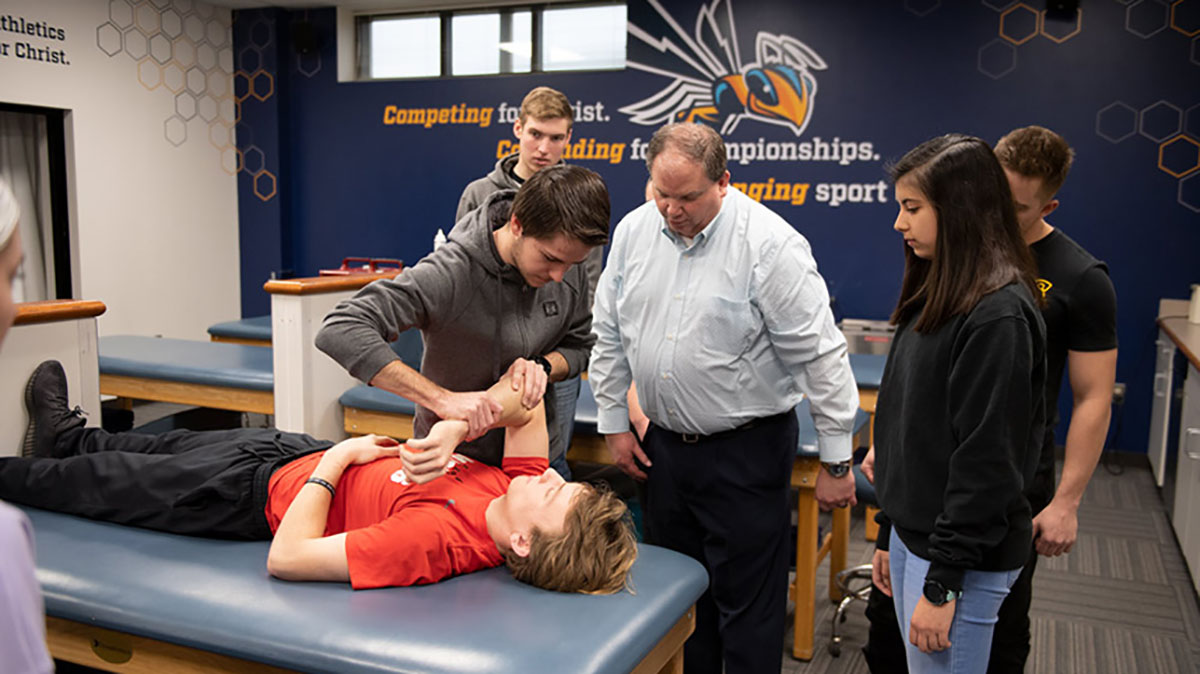Lessons Learned From Monday Night Football Collapse: 4 Questions Every Parent Should Ask

Lessons Learned From Monday Night Football Collapse: 4 Questions Every Parent Should Ask
By Michael Weller, Ed.D., AT, ATC
Associate Professor of Athletic Training
Cedarville University
Ever since Buffalo Bills defensive back Damar Hamlin suffered a cardiac arrest during the Bills’ game against the Cincinnati Bengals, most people in the United States have been glued to the news cycle to see the updates and eventual outcome of Hamlin’s condition. For the first 48 hours following the incident, my wife noticed that I was constantly checking my newsfeed on my phone and television networks to gain some insight into his condition and recovery.
As a practicing Certified Athletic Trainer, this is nothing new to me or my family because sports-related injuries have been part of my 27-year career. But this was different. This was, for lack of a better term, historic. Network television and streaming providers were showing a national audience the worst possible injury scenario. An athlete in the prime of his life was lying motionless on a field while athletic trainers, physicians and other health care professionals were administering life-saving measures before our very eyes.
As I watched, my heart sank, and I explained to my wife and three daughters all the things that were happening and what would happen moving forward.
Twenty years ago, I was in a very similar situation, without the cameras and a national audience. A colleague and I were performing CPR on a well-conditioned patient whose heart just stopped while he was exercising. We followed our plan, and the patient survived cardiac arrest after a significant surgery the next day. He is still alive and active to this day. But on that Monday night in Cincinnati, I was not sure what the outcome was for Damar Hamlin, so as a family we muted the television, bowed our heads and prayed for an athlete we had never heard of before that night.
I mentioned my daughters because each of them is healthy, active and has participated in sports at the interscholastic level. A basketball player, a volleyball player and a cross-country runner. My wife and I cheered them on in both victory and defeat, but we’ve never seen them collapse and not get up.
As a parent, I know the sinking feeling when a child becomes ill or has an injury. As an athletic trainer at the collegiate and National Football League levels, I have explained to parents and athletes at every level of competition (yes, even in the NFL) what an injury means to their ability to compete in the future. This was again different.
As a parent or guardian, you might ask if your child should continue to participate in youth sports, high school sports or at the intercollegiate level. My answer to you is a resounding YES, but you must ask these four questions of your local youth sports organizers and your athletic directors to help keep your child safe.
- Does your child’s organization or school employ a Certified Athletic Trainer? If not, why? It’s not medically appropriate to practice and compete without an athletic trainer onsite. Yes, the financial cost is likely the reason for why 45% of all public high schools (NATA, 2019) in the United States had no access to an athletic trainer. As we witnessed on with Damar Hamlin, the cost of employing an athletic trainer is minimal compared to the cost of one human life.
- Has my son or daughter had a complete physical examination before they begin competing? Have they had a thorough exam, which must include the provider listening to their heart and lungs and referring them on to a cardiologist if any abnormalities are noted?
- Does my organization require coaches to be trained in CPR, and is there an AED onsite at every practice and event? The news that Damar Hamlin is alert and responsive is only possible because CPR was administered by an athletic trainer and then the patient received early defibrillation on the field. If these two things did not occur, the outcome could have been fatal.
- Does my organization have an Emergency Action Plan (EAP) in place to ensure that all the necessary personnel, equipment and functions can be met in case of an emergency? An EAP is only effective if everyone involved is aware of it and has regularly practiced it, which the Bengals and Bills’ medical staffs obvious had prior to that Monday Night Football game. As a result, Damar Hamlin was given the best chance for survival.
As news of his recovery continues to circulate, my family and I will keep praying for him and I will keep teaching my athletic training students to be prepared for the worst and to keep reassuring athletes and parents that they are in good hands.
 Michael Weller, Ed.D., AT, ATC, is Associate Professor of Athletic Training and Director of the Athletic Training program at Cedarville University. Cedarville offers a Master of Athletic Training degree (M.A.T.) that prepare exceptional athletic trainers who serve with Christlike compassion. Cedarville also offers an accelerated B.A. in sport medicine + M.A.T. 5-year option.
Michael Weller, Ed.D., AT, ATC, is Associate Professor of Athletic Training and Director of the Athletic Training program at Cedarville University. Cedarville offers a Master of Athletic Training degree (M.A.T.) that prepare exceptional athletic trainers who serve with Christlike compassion. Cedarville also offers an accelerated B.A. in sport medicine + M.A.T. 5-year option.
Posted in Athletic Training Athletics Master of Athletic Training

















